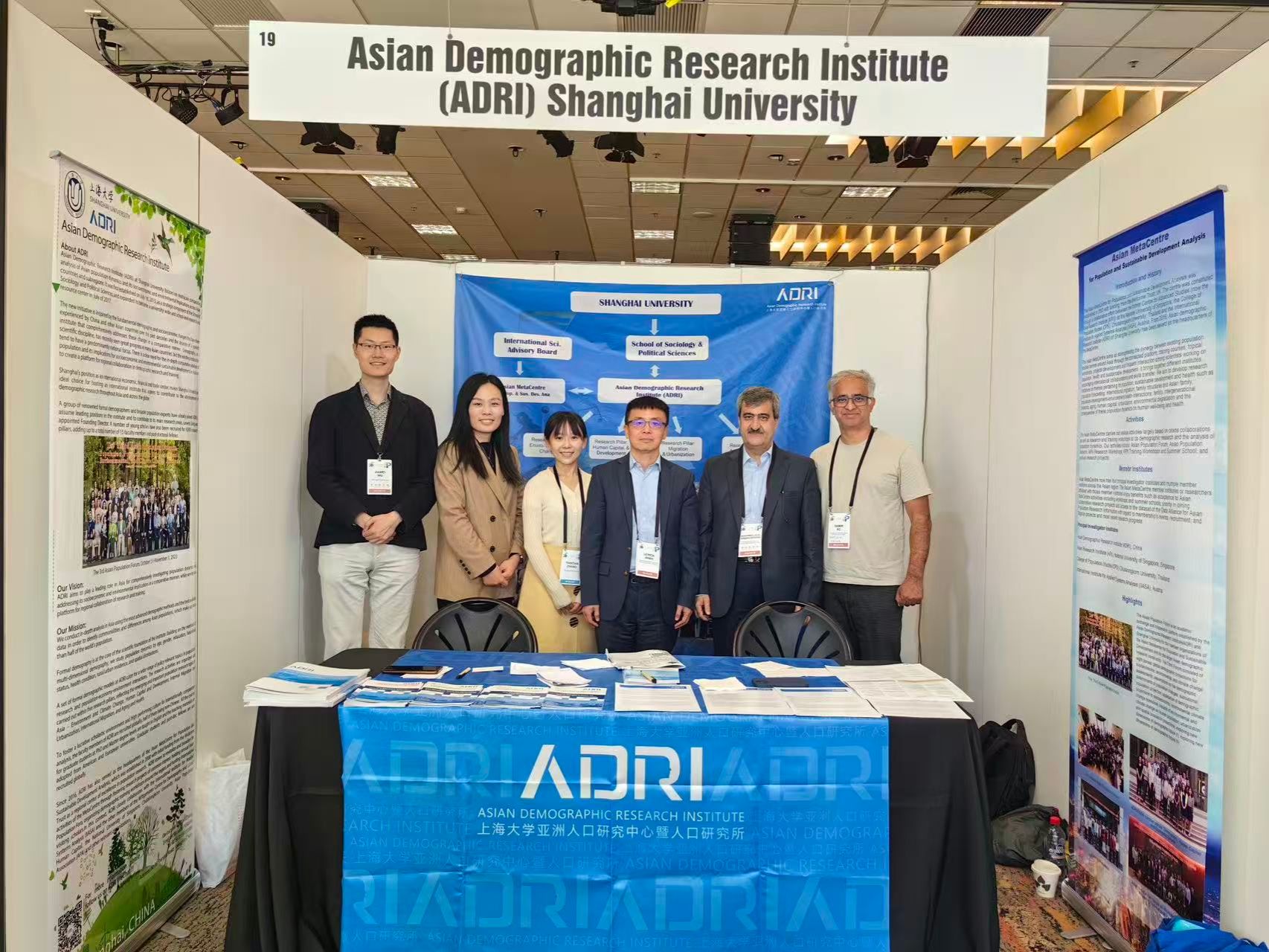From July 13th to 18th, Professor Jiang Leiwen, the director of the Institute of Demography and the Asian Population Research Center (ADRI), along with Associate Professor Gu Baocun, Associate Professor Samir KC, Associate Director Chen Rong, Laboratory Technician Zhang Tian Tian, and Postdoctoral Fellow Wu Jiawei, went to Australia to attend the 30th International Demographic Conference.
This international conference is hailed as the "Olympics" of the field of demography. It is held every four years and is organized by the International Union for the Scientific Study of Population (IUSSP). Its aim is to promote population research and academic exchanges among countries, explore the trends of population changes and their interrelationships with social and economic development, deepen the understanding of global population changes, and promote the prosperity and development of population research. This conference was held in Brisbane, Australia, for six days, with a total of nearly 3,000 participants.
During the conference, the staff of ADRI actively introduced the current research status, organizational structure and future development direction to international scholars, attracting international participants to engage in international cooperation and exchanges, collaborate on papers, and attract academic elites to join us. This received extensive attention from the participating scholars, who showed great interest in Shanghai University and the Asian Population Research Center. A large number of business cards were received on the spot, and over 30 job application resumes were received after the conference.
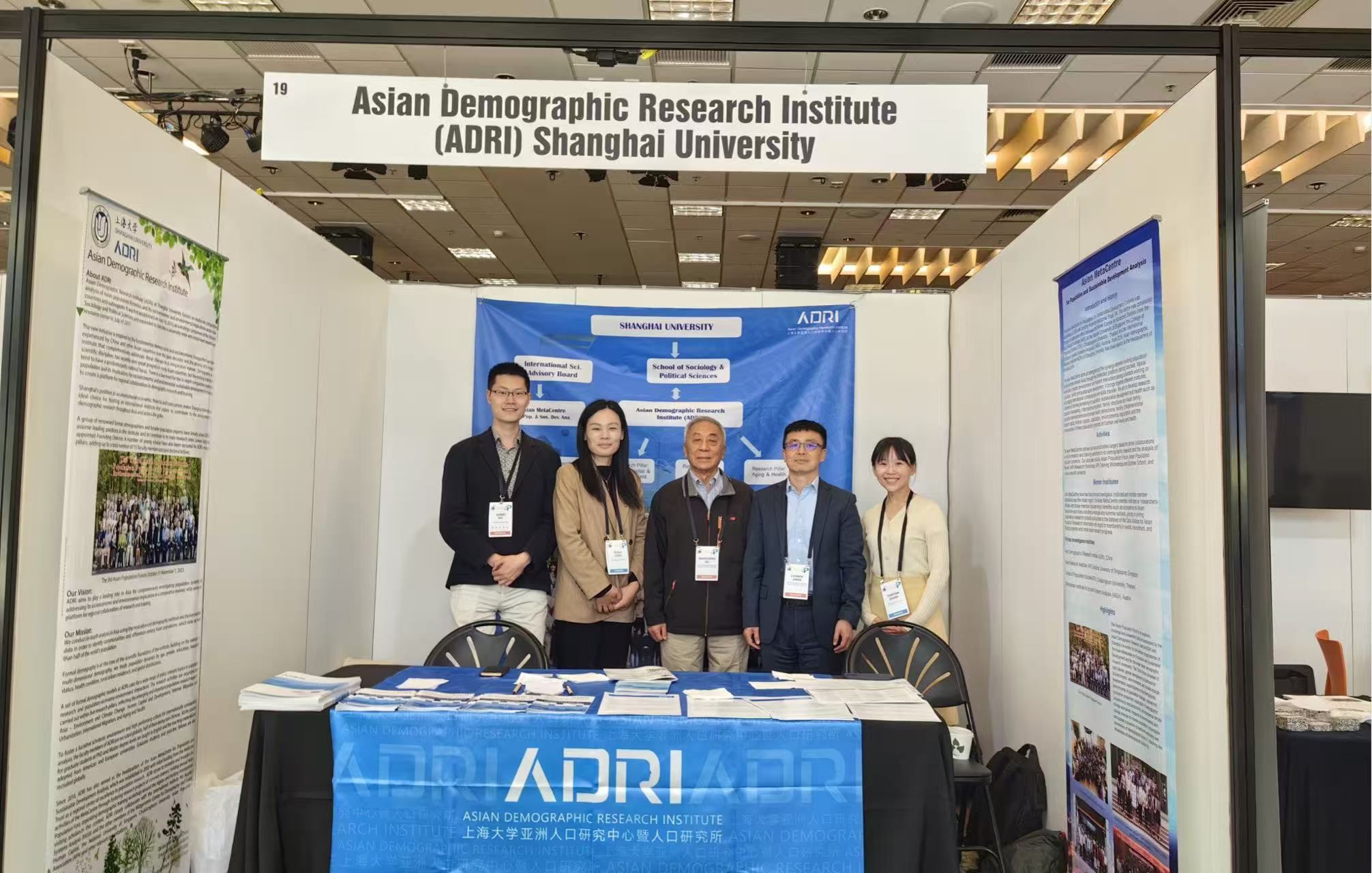
Professor Jiang Leiwen delivered two keynote speeches at this conference. In the "Research Leader Session", he presented a keynote speech titled "Application of the Degree of Urbanization for Demographic Research and Policy" (The Importance of Using the "Urbanization Degree" (DEGURBA) Unified Definition Method for Understanding Population Dynamics). In this speech, he demonstrated the significant value of using the "urbanization degree" method in understanding population dynamics, explained through specific cases how member countries can more accurately analyze spatial structural transformation and urbanization models, shared the latest progress of the DEGURBA project, promoted the application of this method in population and urbanization research, and explored key policy implications.
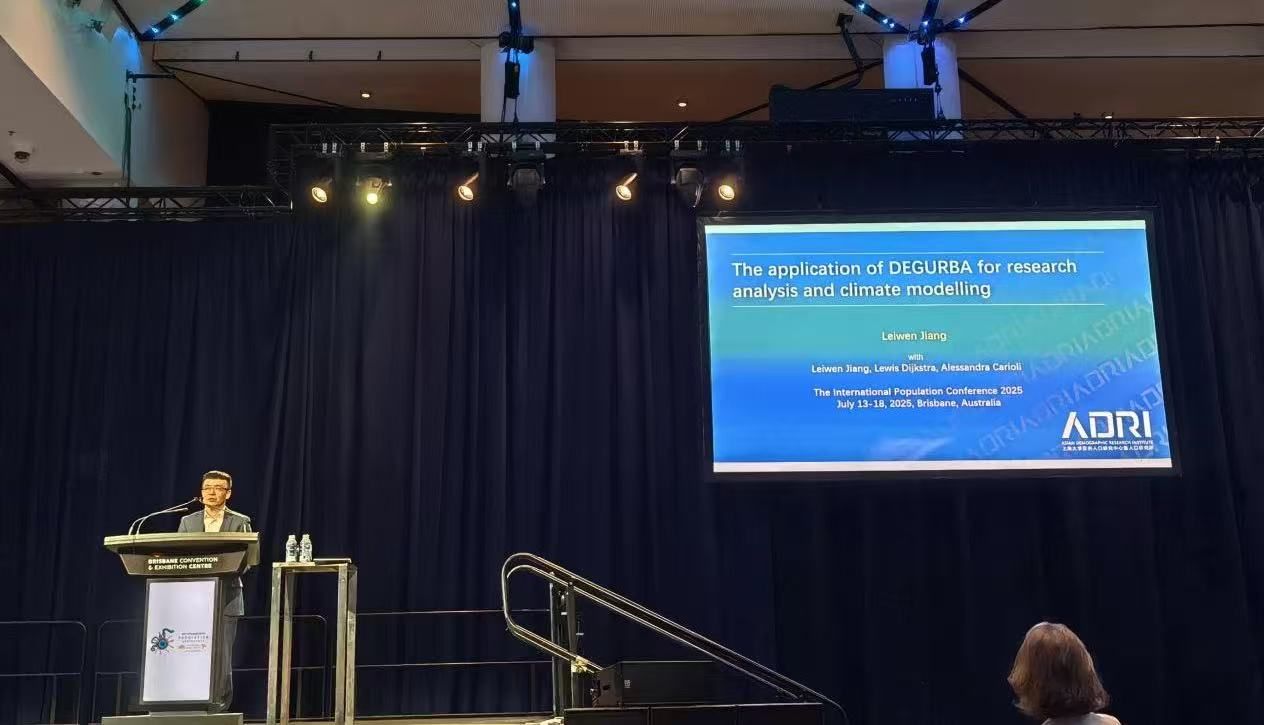
He delivered an academic report titled "Alternative SSP Urbanization Projections Based on Urbanization Degree Data" at the "Sustainable Urbanization through Integrated and Multisectoral Approaches" sub-forum. In this study, he adopted a new "urbanization degree" (DOU) data system, reconstructing the SSP urbanization prediction scheme for the climate change research community. Through an improved urbanization prediction model, he completed the prediction of the urbanization trends for all countries and regions by the end of this century. The prediction results are more robust and can reflect a wider range of urbanization trend uncertainties. This prediction is not intended to replace the prediction outcomes defined by individual countries, but rather provides a more effective alternative for comparative analysis. Additionally, the DOU data has geographic coding characteristics, enabling the provision of cross-scale spatial data and achieving unified urbanization predictions at global, continental, national, and sub-national units.
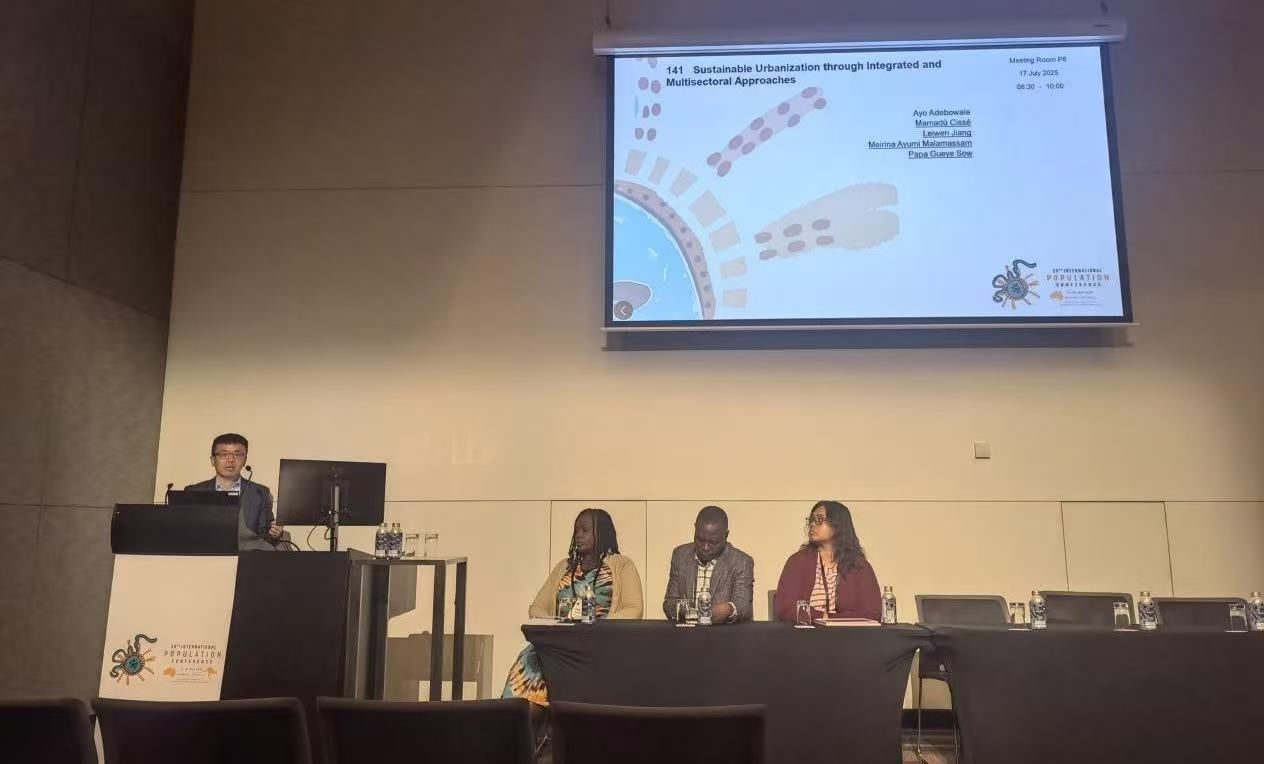
In addition, Professor Jiang Liewen also chaired a panel discussion on "Climate Related Events, Demography, and Spatial Analytical Methods".
Professor Samir delivered a presentation titled "Population Heterogeneity under SSPs at the Sub-National Level in India" in the panel discussion "Population Trends and Estimation". He used a multi-dimensional population model to test different alternative assumptions of fertility rates, mortality rates, migration patterns, and educational transitions at the sub-national level for SSP1 (the rapid development scenario) and SSP4 (the inequality scenario), and conducted a systematic comparison with national-level assumptions. In this study, it was concluded that the total population size and change trajectory of India corresponding to SSP1 and SSP4, under the narrative framework of the national and sub-national levels, showed significant differences.
Dr. Wu Jiawei delivered an academic report titled "Family-Work Trajectories and Inequalities in Later-Life Cognition in China: Evidence from CHARLS" at the "Family, Work, and Education: Complex Interrelations and Consequences" sub-forum. Based on the life history module of the Chinese Health and Retirement Longitudinal Study (CHARLS) (2014) and the regular tracking data (2011-2020), he set three research goals: Firstly, using sequence analysis, he identified the statistical classification of family-work trajectories that conform to the characteristics of China's social and economic changes (such as the one-child policy, the household registration system, urban-rural differences, and the division of employment sectors, etc.); Secondly, through a multiple linear regression model, he analyzed the association between different family-work trajectories and the inequality of cognitive functions (spatial memory and psychological state scores) of the elderly in the 2011 cross-sectional data; Thirdly, using the growth curve model, he evaluated whether the cognitive inequality of different trajectory groups expanded or converged within the 9-year tracking period. This report enriched the academic understanding of the determinants of health inequality in later life from the perspective of life course.
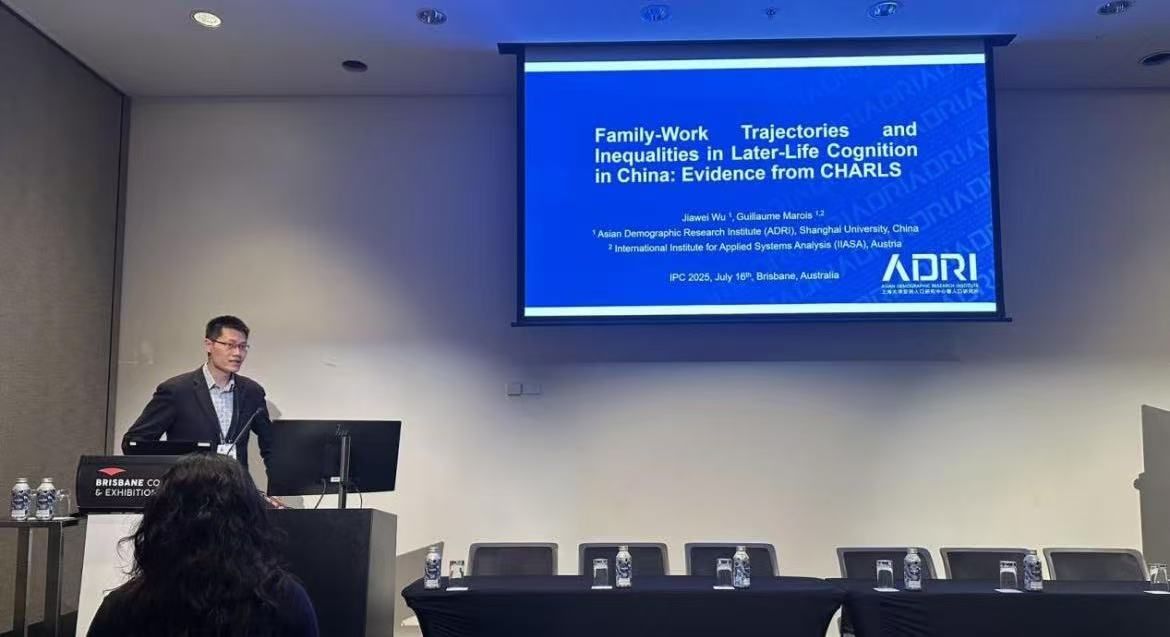
The academic report presented by ADRI at this populationology conference received attention and recognition from international scholars present, and sparked extensive discussions. By presenting the latest research progress in the report, it expanded the possibility of future collaborative articles between ADRI and foreign research scholars. ADRI will continue to strengthen its cooperation with various parties and promote more cross-national and interdisciplinary research projects, with the aim of making greater contributions to global population research.
